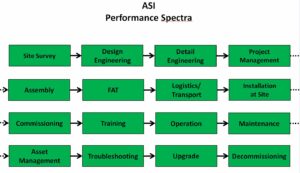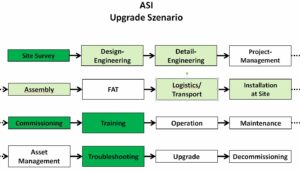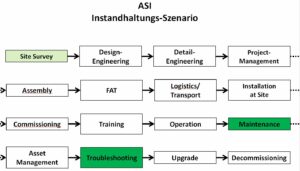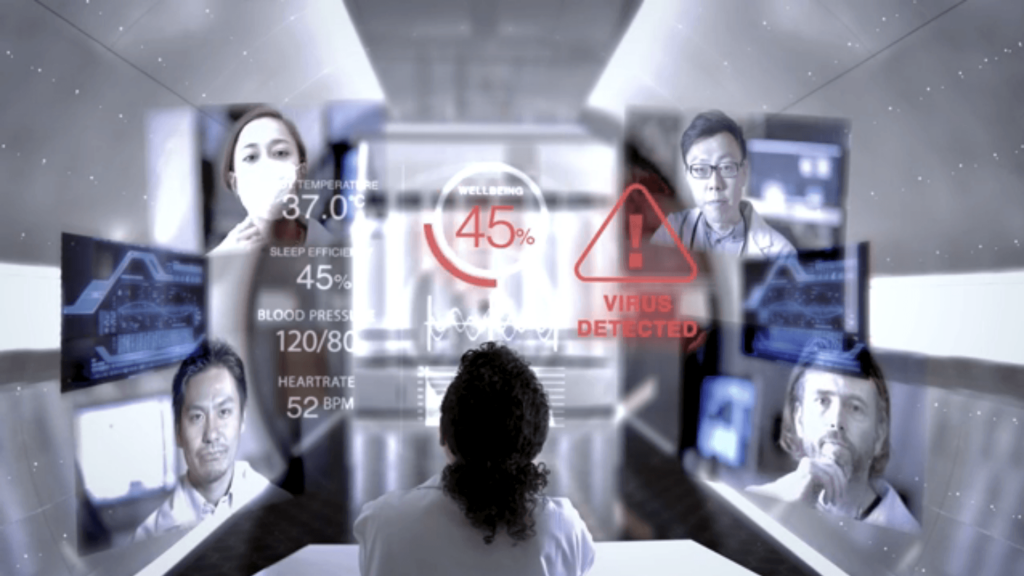Jupp? Where is Jupp? Jupp is currently at the analyzer shelter belonging to plant 3, which is being temperamental again. It’s the third time already this month. The shelter is more than 20 years old and really should have been replaced long ago. On the other hand, the plant itself is due to be replaced five years from now, which is why there won’t be any more investments in new analytics for the time being. Luckily, Jupp is an expert and he’s always managed to sort it out somehow or other in the past. In two years, though, Jupp will be retiring. What will we do when he’s gone?
Someone will have to apply themselves to that shelter more fully – and see if it might possibly be an option after all to keep it going for another few years without having to scrap the whole thing. The gas chromatograph (GC) is actually in quite good shape. Let’s face it, you don’t go out and buy a new car just because the tires have worn down. It can’t be that complicated!
Couldn’t we get one of the analyzer system integrators to apply themselves? Unfortunately, all they’re ever interested in is those big, fat greenfield projects. They’re probably not the slightest bit interested in making one small part of a brownfield plant fit again.
Is that really the case? Does that situation sound familiar to you?
One-stop shop
Yokogawa has been doing ASI – Analyzer System Integration – for more than 50 years now. Now, at long last, ASI has been on show at a trade fair – ACHEMA 2018. The message is “one-stop shop” – everything from one supplier. Yokogawa has proven its ability to handle large-scale greenfield projects with, say, 75 gas chromatographs in 15 analyzer shelters, time and time again. Those are flagship projects, of course.
A diagram of the service components could look like this:

When less is more
Yet regardless of how great ASI is for greenfield projects, it won’t help Jupp solve his problem. He’s not out to build a new refinery. What Jupp needs instead for his brownfield plant is a customized solution. In other words, he’d be very happy to settle for less than the full monty.
The analytical solution as a whole no longer works as it should, even though the GCs are still in fairly good condition. The sample conditioning system, on the other hand, looks certain to give up the ghost sometime soon – it’s becoming increasingly difficult to keep it alive. What’s more, a few of the requirements have changed over the years for operational reasons. A complete new plant would be a waste. That’s why an upgrade is the most sensible and the most economical answer, preferably in combination with training for the plant’s maintenance technicians.
Jupp could imagine a scenario something like this: a colleague from Yokogawa drops by, takes a look at the shelter and makes suggestions – a bit of engineering by an expert, a system foundation nearby as well as installation, commissioning support and briefing where necessary. Operation and maintenance are a matter of routine and there are unlikely to be any surprises in those areas. What is likely, on the other hand, is repair visits at short notice from the supplier, who should ideally be somewhere close by. ASI light, as it were.
The spectrum of services now looks like this:

Support with services
Can we arouse your interest with another scenario? Perhaps you’ll recognize this one.
The analytical solution has been around for a long time, but it’s not so easy with your resources any more. What’s more, the person who built the plant is not sitting just over the road controlling repair and maintenance assignments with his remote. And, in view of the plant’s age, it’s a safe bet that those assignments are going to be necessary more and more often. Regrettably, the investment in a replacement plant will probably not materialize for a while yet, pending strategic decisions by the company management (it’s the same everywhere today). However, the customer is keen to take advantage of maintenance and troubleshooting by the local Yokogawa branch office.
This is what the spectrum of services now looks like:

Pocket-sized ASI
Incidentally, the smallest project that Yokogawa has ever handled is this:

This is a utility panel for a laser spectrometer. The project management consisted of a single page in Excel and a small amount of text. The panel was manufactured by a nearby Yokogawa partner (near to the customer and Yokogawa, that is), and then shipped to the client. It makes a good testimonial for a project that was realized comparatively easily.
Feel free to contact us if your solution is getting on in years and causing you more and more headaches – or if you’re searching for a very specific spectrum of services.




